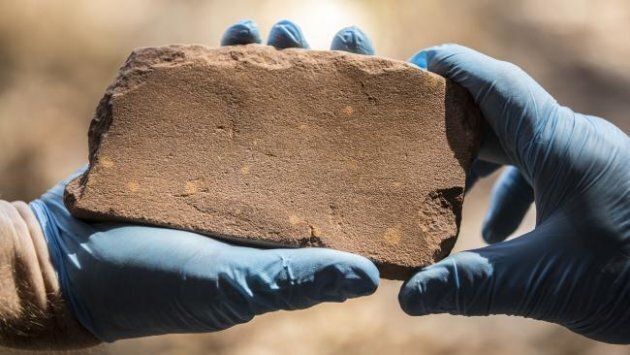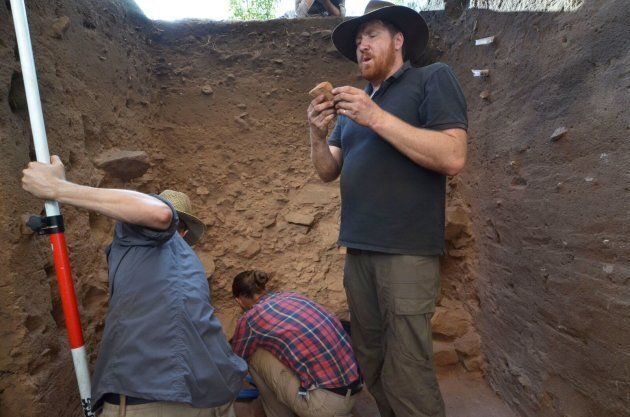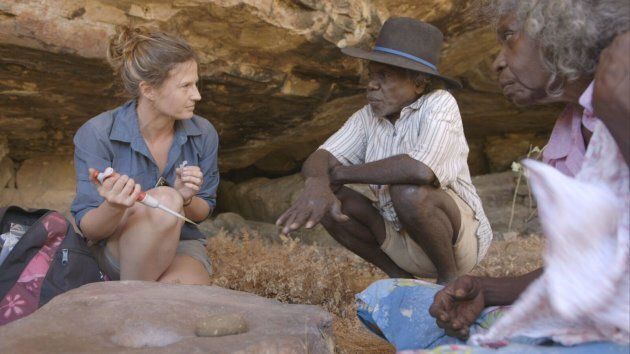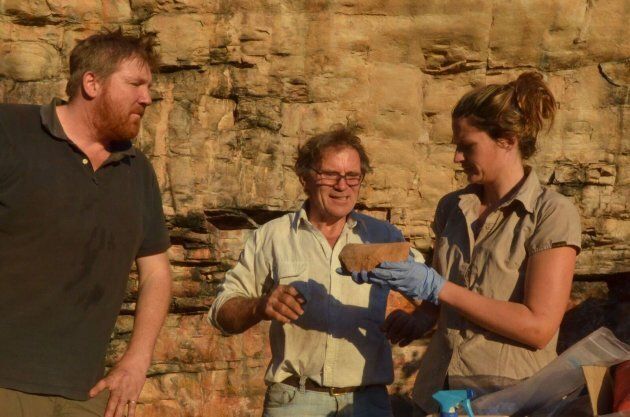
SYDNEY -- Aboriginal people landed in Australia at least 65,000 years ago, a groundbreaking archaeological find in Kakadu has proved.
That is 18,000 years longer than previously confirmed.
And the advanced tools, axes and ground ochre used for painting reveals they were one of the world's most technologically and artistically advanced people at that time.
Associate Professor Chris Clarkson from the University of Queensland led the archaeological dig on the Mirarr people's land in Kakadu.
"To be able to now say with certainty that people had finished the journey out of Africa 65,000 years ago is hugely significant, as it was all very ambiguous up until now," he told HuffPost Australia.

"It also provides an exciting glimpse of how innovative these early Aboriginals were."
His team found hundreds of thousands of artefacts in the evacuation of the rock shelter, called Madjedbebe. This includes around 10,000 artefacts in the oldest layer of soil, which has been dated to at least 65,000 years ago.
"In the top layer, we found shell and bones and spear heads. When we go further down, that organic material drops out but there's axes, lots of grindstones of different kinds used to grind up food and ochre for making pigment for paint," Clarkson said.
Among the finds was the world's oldest-known ground-edge axe head -- a kind of axe made by grinding rather than flaking.

"We have technologies developing here that we don't see developed anywhere else in the world for another 30,000 years -- even 50,000 years ago in the case of Europe. They didn't have axes until 10,000 years ago," Clarkson said.
"They had made an ocean crossing of about 90 kilometres, which implies that they had sea-going craft that was quite sophisticated."
The peer-reviewed findings have been published in the scientific journal Nature.
Part of the reason the date for when modern humans dispersed around the globe is so contested is due to the difficulty of accurately dating such ancient materials.
Carbon dating (which measures the radioactive decay of carbon from organic materials) can only reliably date an artefact up to around 55,000 years old.

But for this dig, the researchers combined the use of carbon dating with a newer technique called optically stimulated luminescence (OPL) dating. Instead of examining organic matter -- which has largely discomposed by this age -- OPL dating uses minerals.
The researchers extracted little tubes of sand from the rock walls of the excavation site, which were then tested using an OPL dosimeter to determine the last time the minerals were exposed to sunlight, and so providing the minimum age of the artefacts.
As well as potentially pushing back the date of modern humans' journey out of Africa, the find also debunks the idea that the arrival of Aboriginals was responsible for the rapid extinction of Australia's megafauna.
Up until around 45,000 years ago, car-sized wombats, 2.5-metre tall kangaroos, giant killer possums and a human-sized duck-like bird roamed Australia's vast landscape.
High-profile scientists, including Australian scientist and intellectual Tim Flannery, have argued that the beasts' slow and lumbering nature made them easy pray for the hunter-gatherers, who quickly hunted them to extinction.

"There's been a lot of dispute about whether humans wiped out megafauna," Clarkson explained.
"It was originally thought that humans arrived about 45,000 years ago, and this seemed to be very, very close in age to when a lot of the megafauna last roamed the earth."
But this latest find reveals that megafauna shared the Australian outback with human inhabitants for at least 20,000 years.
"It shows that they were certainly not the prime, rapid reason for their extinction," Clarkson said.
ALSO ON HUFFPOST AUSTRALIA